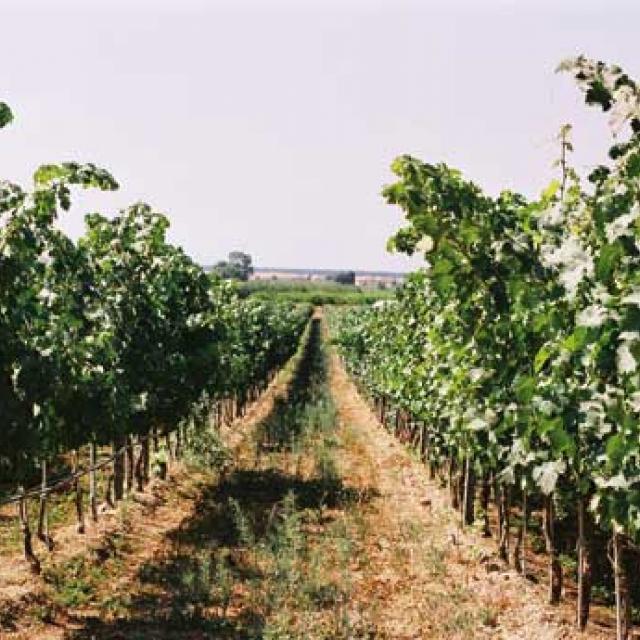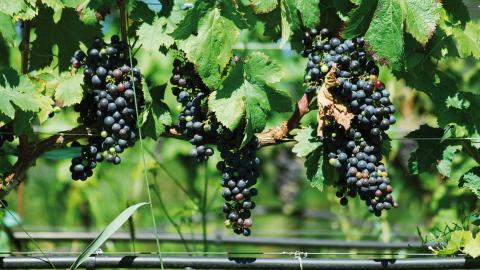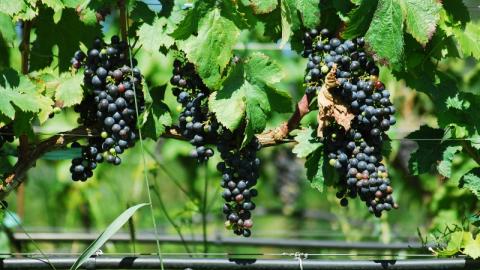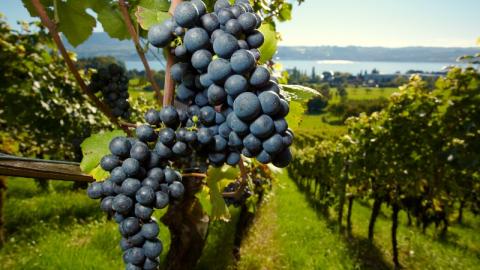Vineyards have suffered from climate change and increasing periods of drought. The regions of Occitanie and Paca have begun installing an irrigation network for the use of the wine growers, a response that was forbidden up until recently.

This is one of the lesser known consequences of climate change: as the periods of drought are becoming more and more frequent, the vines need more water. Even though the grape vine adapts well to dry climates, it is only moderately tolerant to water stress. Thus, apart from the loss of yield, the consequences can range from a deterioration in the aromas to a weakening of the vines. In the light of the economic challenges facing this sector, irrigation has become absolutely necessary.
However, up to 2006, irrigation was forbidden. It has since been permitted – under certain conditions.
In the autumn of 2017, a decree was established to update the rules. Since then permission to irrigate has been provided by the INAO (National Institute of Origin and Quality) to counter water stress, providing that it is covered by the product specifications of the designation of origin. Outside of the protected designation of origin region (AOC), irrigation is only permitted during certain periods.
So how many vines are irrigated among the 746,000 hectares of French vineyards? In the absence of any official census, it is difficult to know, even more so if we consider that the permits are hidden within the 500 or so product specifications relating to the vineyards that have the official quality and origin identification labels (AOC, PDO or PGI) However, two regions have already become organised for applying irrigation water to the vines: the Occitanie and Provence-Alpes- Côtes d’Azur regions.
The well-advanced irrigation network in Occitanie
Occitanie – previously known as the Languedoc-Roussillon region – is at the most advanced stages of these projects. Given the increased demand for water required between now and 2030 (mainly as a result of population pressure and tourism), the Region launched the Aqua Domitia project in 2012, which aims to bring water from the Rhône in the Montpelier and Narbonne regions, primarily to ease the pressure on local water resources. This distribution programme will have a voluntary limit, permitting a maximum flow rate of 2.5 m3/s, i.e. almost 80 M/m3/year.
“We have determined the needs of the vines on the basis of the normal summer rainfall: between 50 and 100 mm, which represents 500 to 1,000 m3 per hectare”, explained Jean-François Blanchet, general manager of BRL, concession-holder of the region’s water distribution network. The financing of the water transfer infrastructure comes from public funds, with contributions from the region, the departements, water supply agency and BRL.
The construction of the secondary network involves the participation of the wine-growers in the sum of 1,000 euros/ha, not to mention the cost of equipping the plots of land for irrigation (between 1,500 and 1,800 euros/ha) and the water bill (150 to 200 euros/ha).
“We have taken care to ensure that all the wine-growers, even the small-scale ones, are able to access this resource”, continued Jean-François Blanchet. The first units have already been built and they irrigate more than 4,000 hectares of land, followed by another 2,000 will follow over the next three years. Almost 10,000 hectares of grape vines could possibly be under irrigation by 2022.
20,000 hectares will soon be irrigated in the Var region
In the Var region a number of wine-grower’s syndicates have signed a framework partnership agreement with the Canal de Provence Company (SCP) in December 2017 for developing the irrigation of their vineyards. The SCP supplies around 7% of the 4.3 billion cubic metres of water required each year in the Provence-Alpes-Cote d’Azur region.
“However, several years of drought have changed the parameters and the surveys carried out with the local stakeholders have revealed that the grapevines of the Var region require around 15 million cubic metres of water per year - for approximately 20,000 hectares”, explained Bruno Vergobbi, general manager of the Provence Canal Company (SCP). Is that a lot? Not according to the SCP: “We used 120 million cubic metres per year in the Verdon region, which represents one third of the rights we have for withdrawing water”, reassured Bruno Vergobbi.
It is a financial issue. In fact, irrigating the vines was not taken into account by SCP during the project’s planning stage, which already irrigates 80,000 ha of crops, mainly in the Var (arboriculture), Bouches-du-Rhône and, to a lesser extent, Vaucluse and Alpes de Haute Provence regions. There is, therefore, a projected increase in the irrigated area of 25%. And the budget is…. 250 million euros. “However, this irrigation network will not generate much money because the vines require little water”, explained Bruno Vergobbi. The SCP has, therefore, considered a new economic model, currently under discussion with the wine-growing syndicates, where the industry will contribute directly towards the investment required for a secondary water distribution network for irrigation.
Irrigation does not have to result in water wastage, though. A whole range of supporting measures has induced the wine-growers to shift towards drip irrigation, which is more efficient, replacing the grape varieties with ones that are more resistant to the new climatic conditions.



